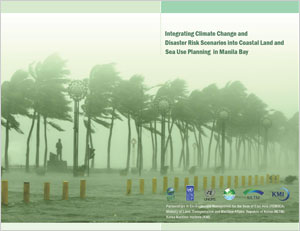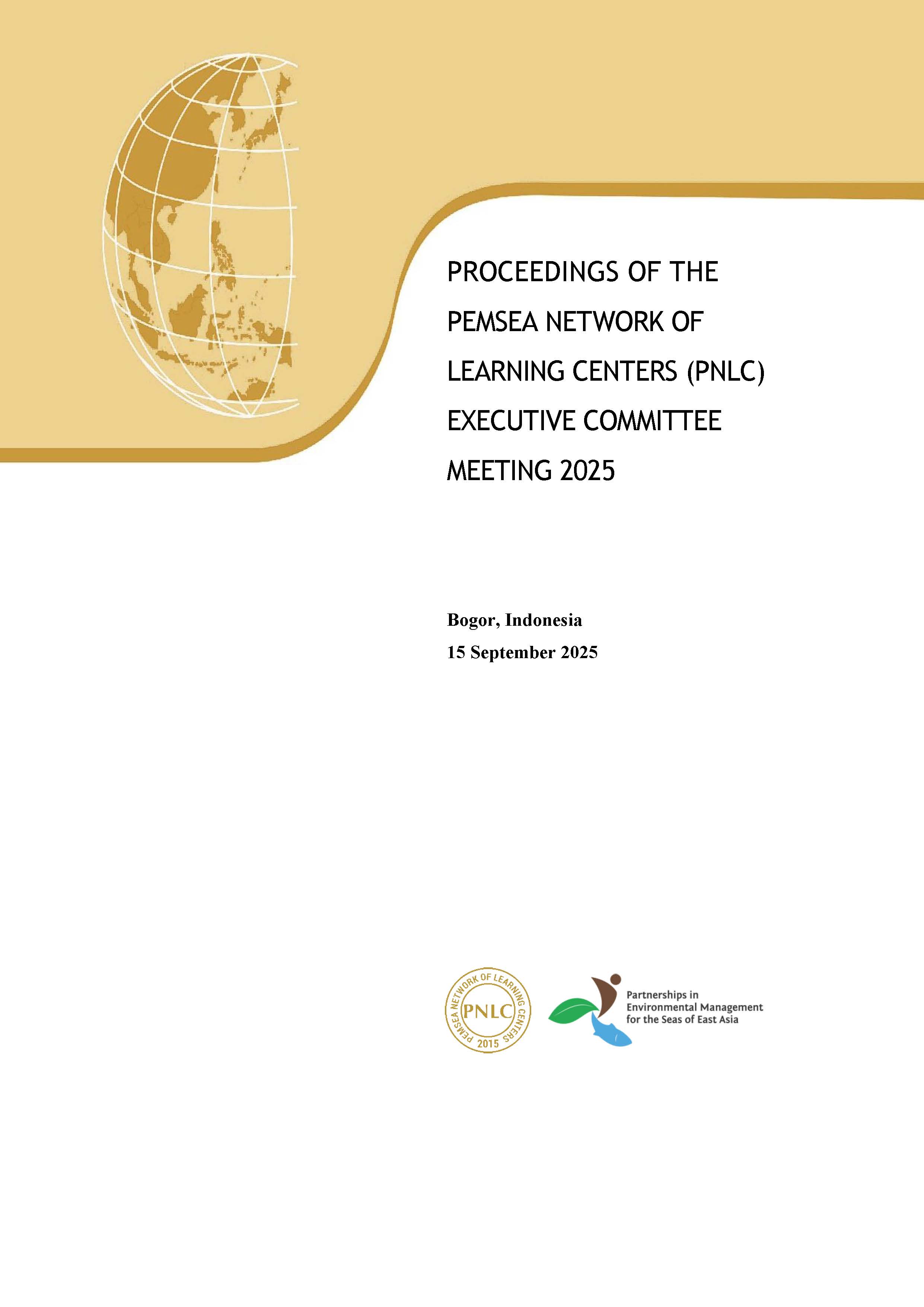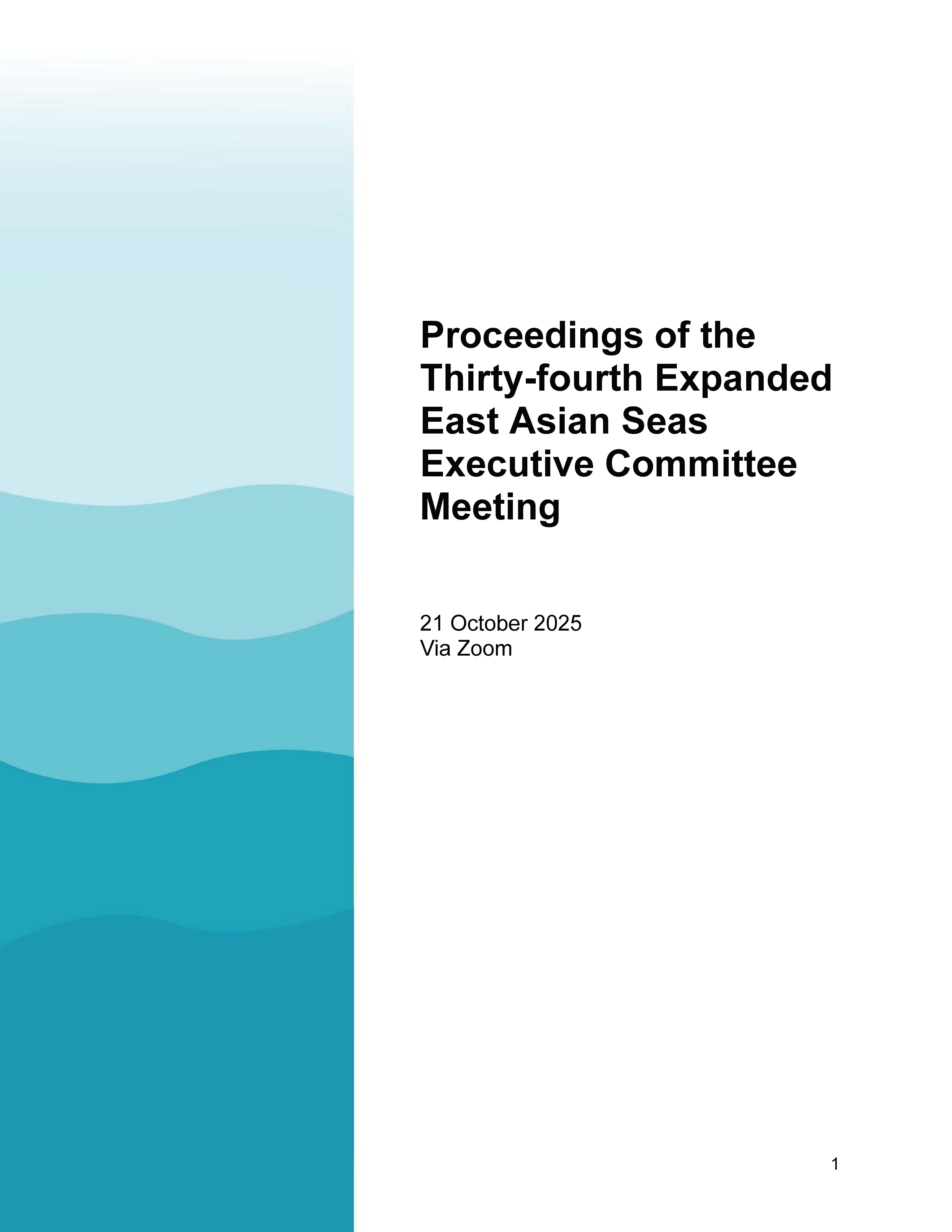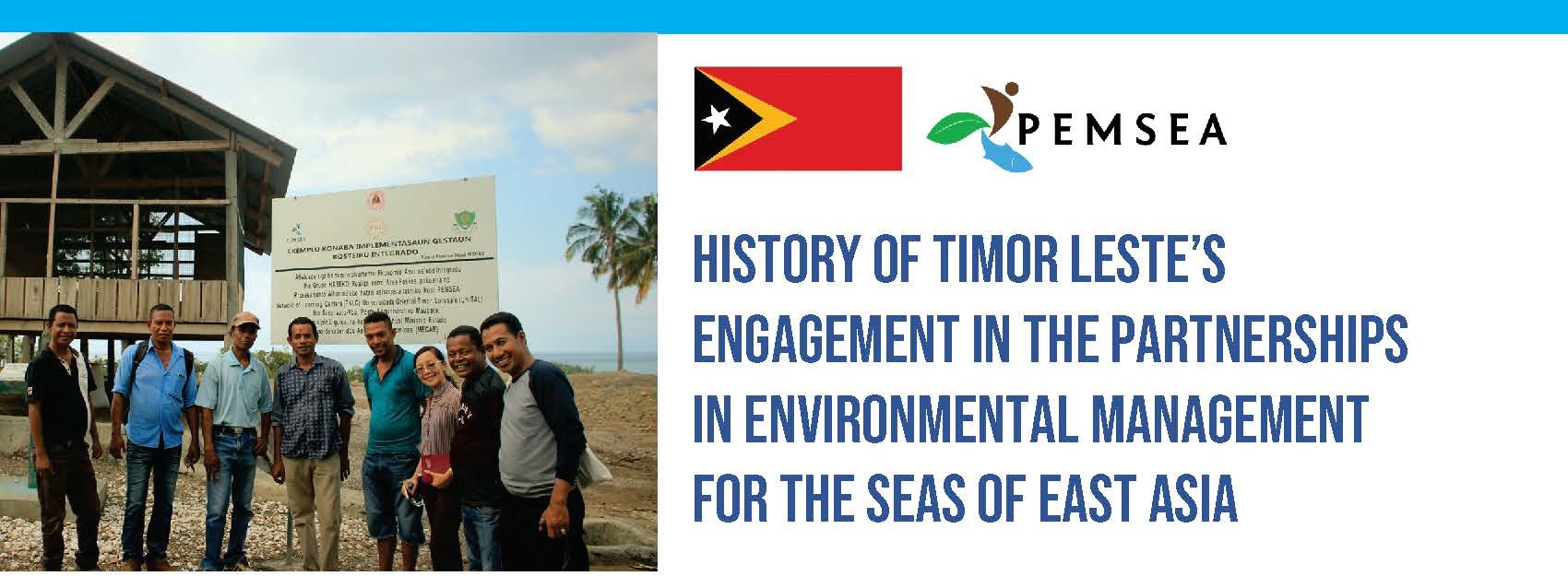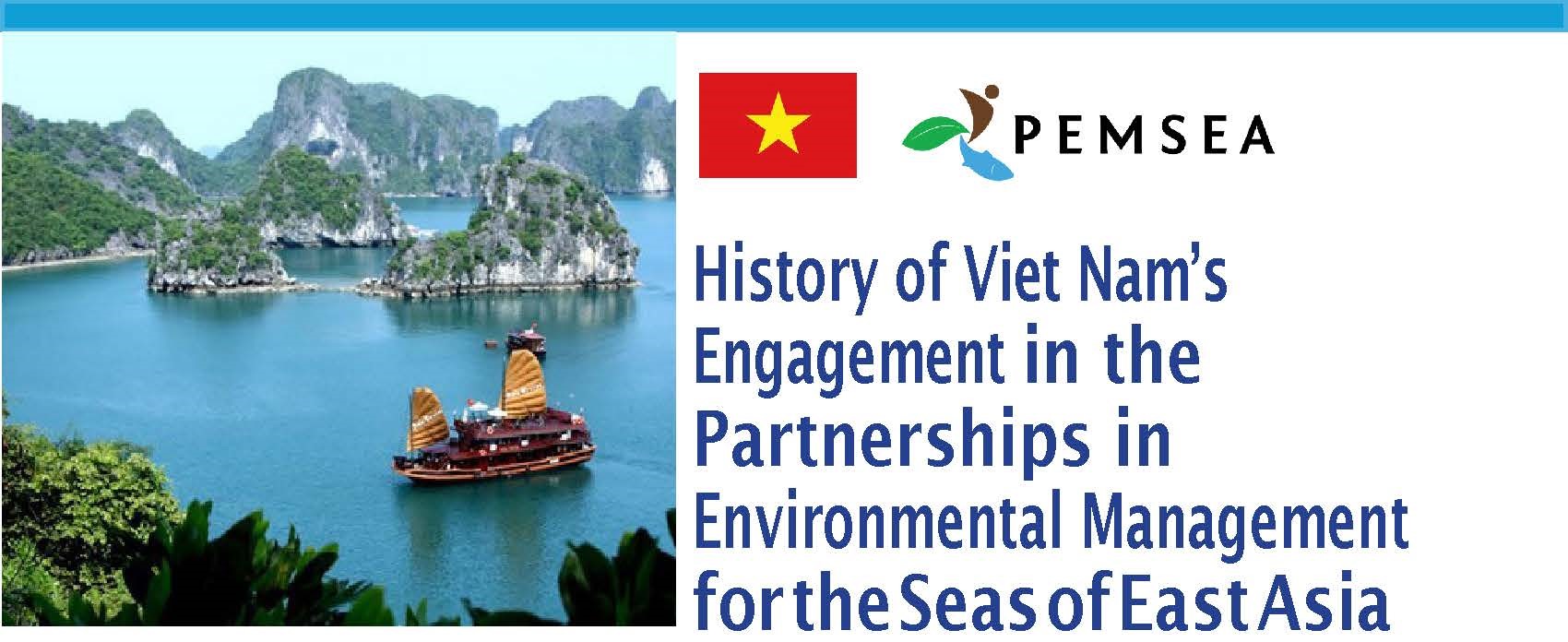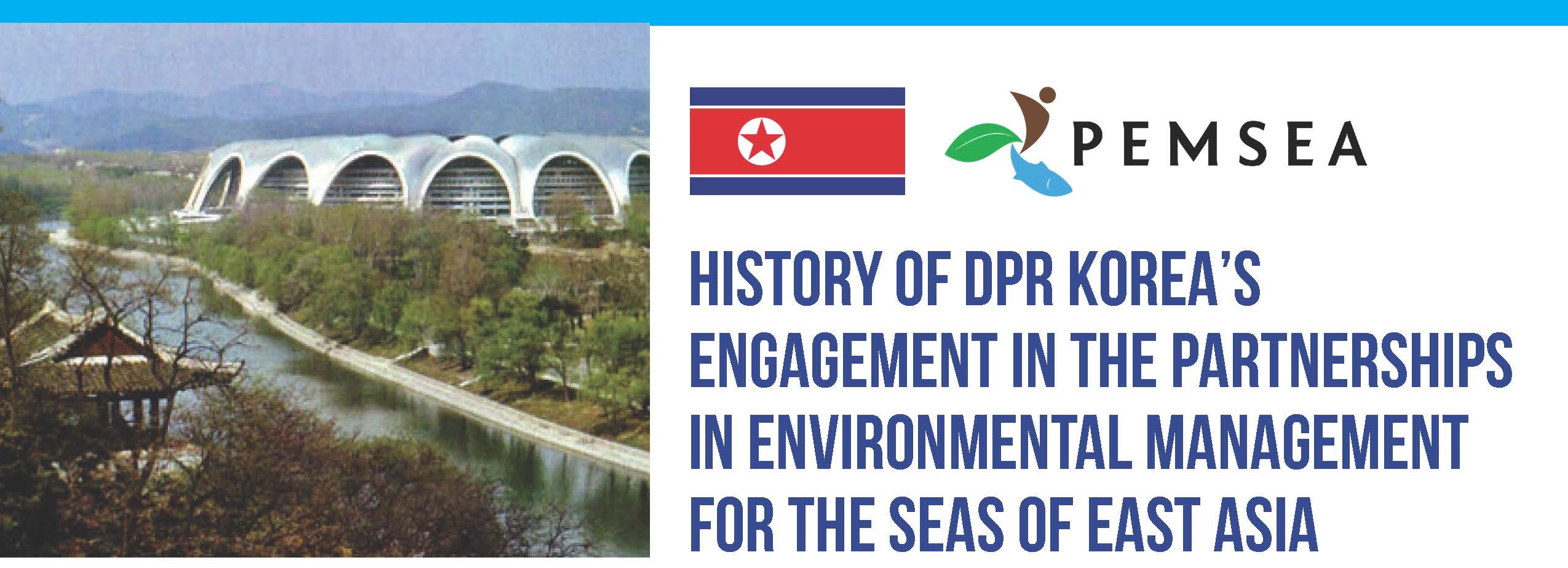
Breadcrumb
Integrating climate change and disaster risk scenarios into coastal land and sea use planning in Manila Bay
PUBLICATION DATE:
Friday, June 01, 2012
PUBLICATION TYPE:
Reports
STATUS:
Out of Print
DESCRIPTION:
One of the key issues facing governments throughout the East Asian Seas (EAS) region is the impact of climate change, variability and extremes, particularly in coastal areas. Manila Bay is no exception, with incidents of flooding, storm surges, saltwater intrusion and erosion occurring with increasing frequency or heightened intensity. Of special concern is the threat of sea level rise in the Bay area and its effects on infrastructure as well as social and economic development in the area. The Manila Declaration, which was signed by the Ministers and Senior Government Officials from the Partnerships in Environmental Management for the Seas of East Asia (PEMSEA) Partner Countries in December 2009, called for countries of the region to strengthen and accelerate the implementation of integrated coastal management (ICM) for sustainable development and climate change adaptation in coastal areas of the region. In Manila Bay, the Department of Environment and Natural Resources (DENR) – River Basin Coordinating Office (RBCO), Coastal and Marine Management Office (CMMO) and Manila Bay Coordinating Office (MBCO), and PEMSEA have been working with local government units (LGUs) to scale up the implementation of ICM around the Bay’s coastline, building on the experience of ICM programs in the Provinces of Bataan and Cavite. One of the major thrusts of ICM development and implementation is the preparation of an integrated land and sea use plan. This calls for the conduct of coastal use zoning, which will serve as a guide in the preparation of a plan and regulatory system to allocate the appropriate zones and corresponding uses of the coastal and marine area. Coastal use zoning is based on the functional capability and suitability of coastal waters and land as to the desired uses, the development envisioned by the stakeholders, existing policies and ecological, cultural and traditional considerations. The zoning process is a socio-political matter requiring scientific and technical inputs, involving multi-sector participation and extensive consultation with concerned stakeholders in order to reach consensus on the various zones and their corresponding uses. A major gap in previous meetings and consultations concerning the sustainable development of Manila Bay is the lack of existing and projected impacts of climate change, variability and extremes on the area. Similarly, inputs to the development of integrated land and sea use plans by the local governments in Bataan and Cavite have been lacking guidance and information on changes that are expected to occur because of sea level rise, as well as other potential impacts of climate change (e.g., more intense rainfall or more intense storms). To address this gap, “macro-scale” land and sea use zones for Manila Bay will be prepared with a specific focus on the different scenarios for sea level rise, flooding and storm surges as a consequence of climate change, variability and extremes in the coastal areas over the next 50 years. This document will provide information on climate change, variability and extremes and sea level rise, as inputs to the coastal land and sea use planning and zoning along the Manila Bay area. The physical boundaries of the coastal area to which the Coastal Land and Water Use Plan applies is governed by the Philippine Fisheries Code of 1998 (Republic Act 8550).
RELATED PUBLICATIONS
PEMSEA NETWORK OF LEARNING CENTERS (PNLC) 2025 Executive Committee Meeting Proceedings
The 2025 PNLC Executive Committee (PNLC EC) Meeting was organized by PNLC Secretariat on 15 September 2025 in Bogor, Indonesia. It was participated by Prof. Yonvitner of the Center for Coastal and Marine Resources Studies of the IPB University (CCMRS-IPB) and President of the PNLC, Dr. Fang Qinhua, Deputy Director of the Coastal and Ocean Management Institute of Xiamen University (COMI-XU) and Vice-President of the PNLC, and Ms. Aimee T. Gonzales, PEMSEA Resource Facility (PRF) Executive Director as members of the PNLC Executive Committee. Ms. Isdahartatie PNLC secretariat Coordinator/ CCMRS-IPB University, Ms. Nancy Bermas from PRF, Francesca Cortez (PRF Secretariat Assistant) and Lusita Meilana, PNLC Secretariat staff. The meeting was chaired by Prof. Yonvitner. Ms. Isdahartati served as the Secretariat of the meeting.
The following supporting documents are annexed to these proceedings:
- Annex 1: Meeting Agenda / Program
- Annex 2: Links to the meeting documents, presentation and photos
- Annex 3: List of participants
Proceedings of the Thirty-fourth Expanded East Asian Seas Executive Committee Meeting
The Expanded East Asian Seas (EAS) Executive Committee convened its 34th Executive Committee Meeting on 21 October 2025 online via Zoom. The meeting was attended by EAS Partnership Council Chair Attorney Jonas Leones; Intergovernmental Session Chair Mr. Le Dai Thang; Intergovernmental Session Co-Chair Dr. Xinwei Yu; Technical Session Chair Dr. Suk-Jae Kwon; and Technical Session Co-Chair Dr. Wakita Kazumi. The PEMSEA Resource Facility (PRF), led by Executive Director (ED) Ms. Aimee T. Gonzales, served as Secretariat to the meeting. PEMSEA Country Partners in attendance included national focal points and representatives from Cambodia, China, Indonesia, Japan, Lao PDR, the Philippines, the Republic of Korea, Singapore, Timor-Leste, and Viet Nam. Non-Country Partners present included representatives from the ASEAN Centre for Biodiversity, Ipieca GISEA, Oil Spill Response Limited, National Marine Hazard Mitigation Service, International Center for Environmental Management of Enclosed Coastal Seas (EMECS), PEMSEA Network of Local Governments, and Korea Institute of Ocean Science & Technology, among others. Online observers included staff from the PEMSEA Resource Facility and UNDP.
History of Timor Leste's engagement in PEMSEA
Since joining PEMSEA in 2006 through the signing of the Haikou Partnership Agreement, Timor-Leste has made remarkable progress in advancing sustainable coastal and ocean governance under the Sustainable Development Strategy for the Seas of East Asia (SDS-SEA). Over the years, the country has implemented Integrated Coastal Management (ICM) programs in key municipalities, developed national ocean and coastal policies, and strengthened inter-agency collaboration for marine protection and livelihood enhancement. Through its participation in regional initiatives such as ATSEA and the Marine Plastics ODA Project, Timor-Leste continues to demonstrate strong commitment to ecosystem-based management, blue economy development, and regional cooperation for healthy and resilient seas.
History of Viet Nam's engagement in PEMSEA
Since 1993, Viet Nam has been an active partner in advancing sustainable coastal and ocean governance in the East Asian Seas through PEMSEA. From pioneering Integrated Coastal Management (ICM) in Da Nang to establishing the Viet Nam Administration of Seas and Islands (VASI), the country has institutionalized ICM in national policy and legislation while fostering regional cooperation through leadership roles in PEMSEA bodies and ministerial forums. Viet Nam’s consistent participation in key initiatives and adoption of major regional declarations underscore its strong commitment to blue economy development, marine ecosystem protection, and the long-term implementation of the Sustainable Development Strategy for the Seas of East Asia (SDS-SEA).
History of DPR Korea's Engagement in PEMSEA
Since joining the regional GEF/UNDP/IMO Marine Pollution Prevention in the East Asian Seas (MPP-EAS) project, the DPR Korea has actively advanced Integrated Coastal Management (ICM) through the establishment of the Nampho demonstration site and the National ICM Training Center at Kim Il Sung University. The country has consistently participated in key regional forums, including the East Asian Seas Congresses and Ministerial Forums, adopting major regional declarations and frameworks such as the SDS-SEA and Manila Declaration. Its engagement reflects a sustained commitment to regional cooperation, marine pollution prevention, and sustainable coastal development under PEMSEA.
